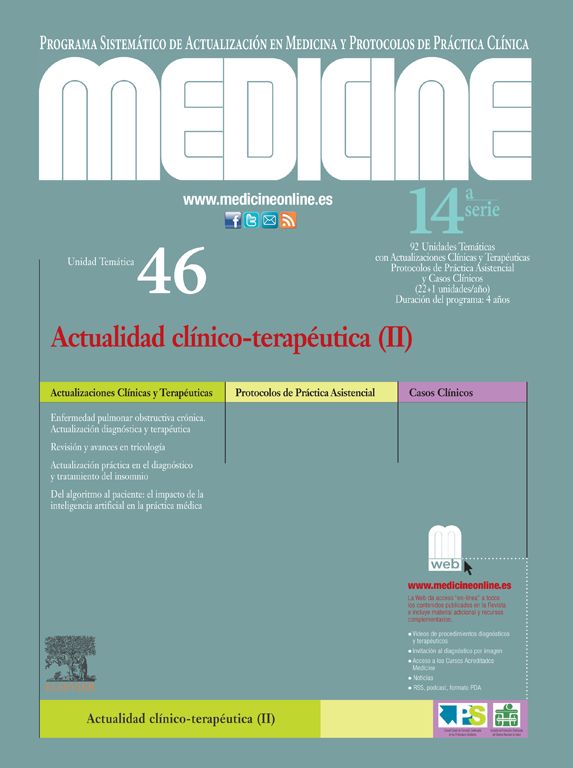El mesotelioma pleural es el principal tumor maligno pleural. La mayoría de los casos se asocian con la inhalación de fibras de amianto. Las manifestaciones más frecuentes son la disnea y el dolor torácico, en pacientes con derrame pleural y/o engrosamiento pleural nodular. El diagnóstico debe ser histológico, diferenciándose tres grandes subgrupos: epitelial, sarcomatoide y mixto. La estadificación más utilizada es la basada en el TNM y propuesta por la International Association for the Study Lung Cancer (IASLC). Los principales factores pronósticos, además del estadio del TNM, son el tipo histológico, la edad y el estado general del paciente. En pacientes seleccionados, puede estar indicada la cirugía dentro de un tratamiento multimodal. Para determinar los pacientes candidatos a la cirugía, debe tenerse en cuenta, además del tipo histológico epitelial, una adecuada reserva cardiopulmonar y un estudio de extensión con tomografía computarizada torácica y abdominal, resonancia magnética, tomografía por emisión de positrones y exploración del mediastino con ecografía endobronquial o mediastinoscopia. En pacientes no candidatos quirúrgicos se valorará la quimioterapia en un régimen de platino/pemetrexed y/o el tratamiento sintomático que incluye la pleurodesis y el control del dolor y la disnea.
Palabras clave
Pleural mesothelioma is the main malignant pleural tumor. Most cases are associated with inhalation of asbestos fibers. The most frequent manifestations are dyspnea and chest pain in patients in pleural effusion and/or nodular pleural thickening. The diagnosis is histological, distinguishing between three big subgroups: epithelioid, sarcomatoid, and biphasic. The most used staging is based on the TNM staging system and proposed by the International Association for the Study of Lung Cancer (IASLC). The principal prognostic factors, in addition to TNM stage, are the histological type, age, and the patient's overall condition. In select patients, surgery may be indicated as part of multimodal treatment. In order to determine which patients are candidates for surgery, in addition to the epithelial histological type, an adequate cardiopulmonary reserve, an extension study with a computed tomography scan of the chest and abdomen, magnetic resonance imaging, positron emission tomography, and an examination of the mediastinum with endobronchial ultrasound or mediastinoscopy should be taken into account. In patients who are not candidates for surgery, chemotherapy in a platinum/pemetrexed regimen and/or symptomatic treatment that includes pleurodesis and control of pain and dyspnea should be considered.
Keywords
Identifíquese
¿Aún no es suscriptor de la revista?
Comprar el acceso al artículo
Comprando el artículo el pdf del mismo podrá ser descargado
Teléfono para incidencias
De lunes a viernes de 9h a 18h (GMT+1) excepto los meses de julio y agosto que será de 9 a 15h



